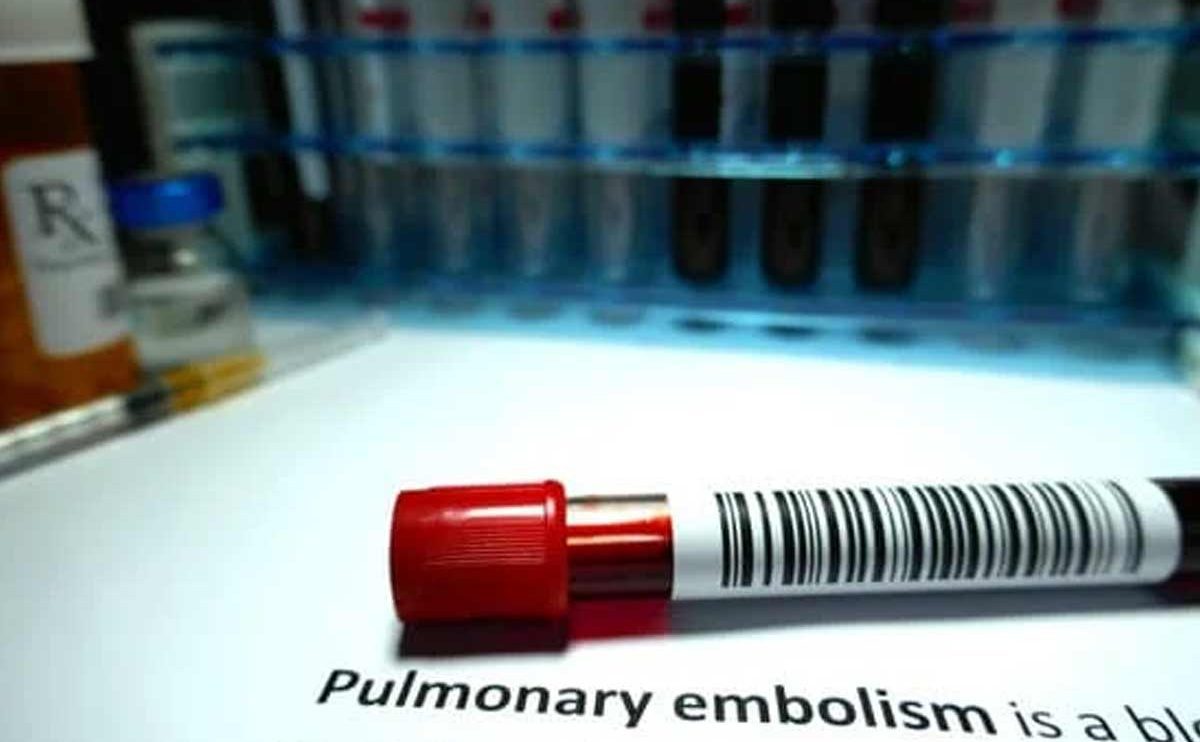Embolism is a blockage in the arteries due to a foreign body that impedes the smooth passage of blood.
Understanding
Embolism is a blockage in an artery due to a foreign object, such as a blood clot or air, which impedes the smooth passage of blood.
Tissues and organs of the body need oxygen, which is supplied throughout the body through the bloodstream. If the blood supply to a major organ, such as the brain, heart, or lungs, is restricted by an embolism, that organ can lose some or all of its function.
There are two serious health problems that can be caused by an embolism, namely:
- A stroke occurs when blood flow to the brain is obstructed.
- A pulmonary embolism is when a foreign body blocks the artery that carries blood from the heart to the lungs (pulmonary artery).
Embolism Reason
Before knowing the cause of an embolism, it is necessary to know what is meant by the term foreign body. Foreign bodies are objects or substances that should not be present in the bloodstream.
Foreign bodies that cause embolism can be:
- Blood clot. Blood contains natural clotting agents whose job is to help prevent excessive bleeding. Several health conditions can encourage blood clots to form in the veins even though there is no bleeding. For example obesity, heart disease, cancer, and pregnancy.
The blood clot can move with the blood flow before finally getting attached and blocking blood flow to an organ.
- Fat. Fractures in certain parts of the body can cause fat particles in the bones to be released into the bloodstream. These fat particles can then cause blockages.
- Air. Embolism can also occur when air or other gases enter the bloodstream. Air embolism needs to be a concern for scuba diving divers.
If a diver swims back to the surface too quickly, the pressure changes that occur can trigger the formation of nitrogen bubbles in the bloodstream. These bubbles get trapped in blood vessels and can become clogged.
- Cholesterol. In the blood vessels of individuals with atherosclerosis (plaque buildup in the blood vessels), small pieces of cholesterol can be released from the side of the blood vessels, which then form emboli.
- Amniotic fluid. Very rarely, the amniotic fluid that protects the fetus in the uterus can enter the blood vessels during delivery, causing blockages. This condition can cause breathing problems, decreased blood pressure, and loss of consciousness.
Embolism Symptom
Symptoms that arise due to embolism depend on the type of embolism that occurs and the location where the blockage occurs. For example, in a stroke, the commonly observed symptoms are an asymmetrical face, weakness or numbness in one arm or leg, slurred speech or not being able to speak at all.
In pulmonary embolism, the symptoms experienced can be in the form of sharp pain in the chest or like being stabbed. Pain can appear either suddenly or gradually increase. Shortness of breath, coughing, feeling tired and dizzy, and fainting are also common symptoms.
Embolism Diagnosis
The diagnosis of an embolism can be determined through a detailed medical interview to evaluate the symptoms and previous medical history. Apart from that, a direct physical examination can also be carried out, and certain supporting examinations that may be needed.
Several tests can be done to help determine if a person really has an embolism. One of the blood tests is to identify levels of D-dimer, which is a protein found in the blood when a blood clot breaks down.
The D-dimer examination can be used to diagnose blood clotting disorders such as thrombosis (a condition in which a blood clot sticks to a blood vessel). Investigations such as Computerized Tomography Pulmonary Angiography (CTPA) and Ventilation-Perfusion Scans can also be performed to evaluate the structure of the body’s organs as well as air and blood flow in the lungs.
Embolism Handling
Treatment of embolism depends on various factors. Starting from the factors that cause the blockage, the size of the blockage, and the location of the blockage in the body. A surgical procedure called an embolectomy is sometimes performed to remove an obstruction.
In the process of surgery, the surgeon will make a split in the blocked artery so that the foreign body can be sucked out through a process known as aspiration.
Medications may also be used to dissolve emboli caused by blood clots (thrombolysis). Treatment with anticoagulants can help reduce the chance of blood clots.
Embolism caused by air bubbles is generally treated using a hyperbaric chamber. The air pressure in the chamber is higher than normal air pressure, which can help reduce the size of the air bubbles in the diver’s body.
Embolism Prevention
Embolism can’t always be prevented, but there are some things to consider to reduce the risk. The preventive steps you can take are:
- Follow a healthy diet that is low in fat and high in fiber, including whole grains, fruits, and vegetables.
- Limiting the amount of salt in your daily diet to no more than six grams or one teaspoon each day.
- Lose weight if you are overweight or obese. The best way is a combination of good, right, and routine physical activity; as well as a healthy diet that controls calorie intake.
- Avoid smoking.
- Exercise for at least 150 minutes each week.












Add Comment